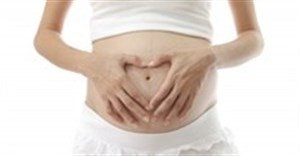Trending
Elections 2024
Alarmingly high C-section rate causes concern

The Barometer warns that this rate is "unnecessarily high and a matter of concern, as bleeding during and after C-sections remains one of the leading causes of maternal deaths, due to obstetric haemorrhage."
Health department figures show that 8% of all maternal deaths in the public sector due to haemorrhage happened as a result of women bleeding during C-sections and 27% of these deaths can be ascribed to women bleeding after C-sections.
Statistics from Fedhealth Medical Scheme's data warehouse over the last three years confirm this finding, showing that of all its deliveries in South Africa, 68.5 % are performed via C-section. This is across both public and private facilities. Although this percentage is much lower in Europe and the US, globally C-section statistics are on the rise. According to the NHS Foundation Trust in London, the average C-section deliveries in the UK are 25%, well above the WHO recommendation of 15%.
In contrast, countries such as Kenya have a C-section rate of 4%, India 8.5%, Ghana 6.9% and Zimbabwe only 4.8%.
The South African stats are somewhat alarming, according to Fedhealth Principal Officer, Peter Jordan. He says there are many complex reasons for the high rate of C-section births, including the fact that hospital facilities are becoming more 'medicalised', with doctors specialising in a variety of surgical disciplines such as obstetrics and gynaecology and South African women are increasingly requesting C-section deliveries.
The report also cites delays in the time it takes doctors to attend to obstetric emergencies as one of the reasons some doctors prefer to do scheduled C-section deliveries rather than assisting with natural births. This has been indicated as a key driver of the C-section trend.
Some schemes, such as Fedhealth, cover the cost of deliveries by a midwife and the hire of a water-birthing unit. They also cover four post-natal visits by a midwife, so that new mothers are empowered to make the best decisions regarding their confinement. "It is unfortunate that in SA there has been little support for private independent midwives."
C-section procedures and the associated hospitalisation costs are significantly more expensive than natural deliveries. Jordan says C-sections, on average, cost a medical aid scheme approximately R24,027 - with hospital costs comprising about 70% of this cost. Natural deliveries, on the other hand, are significantly less expensive - costing a medical aid scheme approximately R16,679.
"From a health funding perspective, at some stage consideration needs to be given to the additional costs associated with medically unnecessary C-sections. From a risk perspective, the number of fatalities from C-sections needs to be urgently addressed," concluded Jordan.









